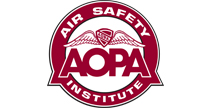All available information - Cessna flies into storm line
(CEN09FA369)
 By David Jack Kenny
By David Jack Kenny
The federal aviation regulations are said to have been written in blood. When their number and complexity become daunting or their details seem maddeningly arbitrary, it’s worth remembering that most are the products of someone’s bitter experience. The expansive phrasing of FAR 91.103, which requires each pilot in command to “become familiar with all available information concerning that flight,” may seem like a standing excuse to punish pilots when anything at all goes wrong, but it makes some sense in an environment in which what you don’t know can readily hurt you. And the regulation does help by suggesting some specifics, all of which are things that any sensible pilot would want to know: available runway lengths, required takeoff and landing distances, and—the first thing listed in the very first paragraph—“weather reports and forecasts” for any flight “not in the vicinity of an airport.” A 424-nautical-mile cross-country would probably qualify, especially at night.
About 20 minutes before 10 p.m. on June 18, 2009, a Cessna R182 crashed into a cotton field near Dougherty, Texas. The accident site was only 34 nm from the flight’s intended destination, the Hale County Airport outside Plainview. Both on board were killed; the wreckage was strewn through a debris field some 400 feet long. The Skylane had departed from the Southwest Houston Airport without a flight plan. There is no knowing what weather information the VFR-only private pilot might have reviewed before takeoff, but he did not get a formal weather briefing.
It might have been a good idea. “The synoptic conditions over the Texas [panhandle] were favorable for high-based thunderstorm development during the afternoon and evening hours,” according to the investigation’s meteorological summary. “The National Weather Service (NWS) Storm Prediction Center’s Convective Outlook ... had issued an advisory for a line of thunderstorms over the Texas panhandle with the threat of strong locally damaging winds. The NWS Radar Summary Chart for 2120 depicted a solid line of thunderstorms west and northwest of the accident site, with the 2200 Surface Analysis Chart depicting an outflow boundary bowing outwards ... in the immediate vicinity of the accident site.” Doppler radar in Lubbock, 40 miles south-southwest, showed “intense to extreme” precipitation along the leading edge of the storm. Convective sigmets in effect for the area “warned of several areas of severe thunderstorms moving from 240 degrees at 30 knots, with cloud tops above 45,000 feet, and warned of potential hail to 1 inch and wind gusts to 70 knots.” The storm was approaching from the southwest as the Cessna approached from the southeast.
The gust front hit Lubbock an hour before the accident. A special METAR at 8:40 p.m. recorded west winds gusting to 51 knots with visibility of three-quarters of a mile in blowing dust. At Plainview, strong south winds shifted to the west as the outflow boundary passed through. A METAR issued at 9:25 p.m. included winds from 270 degrees at 18 knots with gusts to 33 knots, broken ceilings at 5,000 feet, and visibility of 2-1/2 miles in heavy rain. Conditions improved as the leading edge of the storm rolled through—but it was rolling toward the Cessna.
Radar track data from the last 25 minutes of the flight showed it heading north-northwest at 6,400 msl before reversing course and descending 400 feet. It then reversed course again, climbing to 6,500, and turned east and then west before disappearing from radar. The pilot contacted Plainview Unicom at 9:25 p.m. requesting runway information and again just before 9:40 p.m. to ask about the weather. A local resident, himself a pilot, told investigators that he saw landing lights at about 1,000 to 1,500 feet agl as he drove past and “thought that this pilot was about to get himself into a bad wind storm.” The Unicom operator tried to contact the Cessna at 9:50 p.m. without success. The wreckage was found two days later.
Although the pilot hadn’t gotten a weather briefing, the passenger had contacted the FBO earlier in the day to ask how late it would be open and whether it offered a courtesy car. The operator warned her of the forecast chance of thunderstorms, and she replied that they had “weather onboard.” The NTSB report doesn’t give the details, but since Cessna 182s aren’t usually equipped with radar, it seems likely she meant datalink and/or atmospherics. But the latter only detect lightning, not turbulence, wind, or precipitation, and datalink radar images can be six or seven minutes old—not fresh enough to enable someone to race a storm that’s converging at more than 30 knots.
Flight service briefers have been heard to remark that with the wealth of weather information available these days, pilots who call for a formal briefing usually seem to be covering themselves, establishing a formal record of their compliance with 91.103 in case any questions come up. That’s not a bad thing in its own right, but it’s not the only reason to review the weather with someone else, especially before a long night cross-country. If you ask, you just might learn something new—something that just might save your life.
Related Links
WeatherWise: Thunderstorms and ATC online course
IFR Insights: Cockpit Weather online course